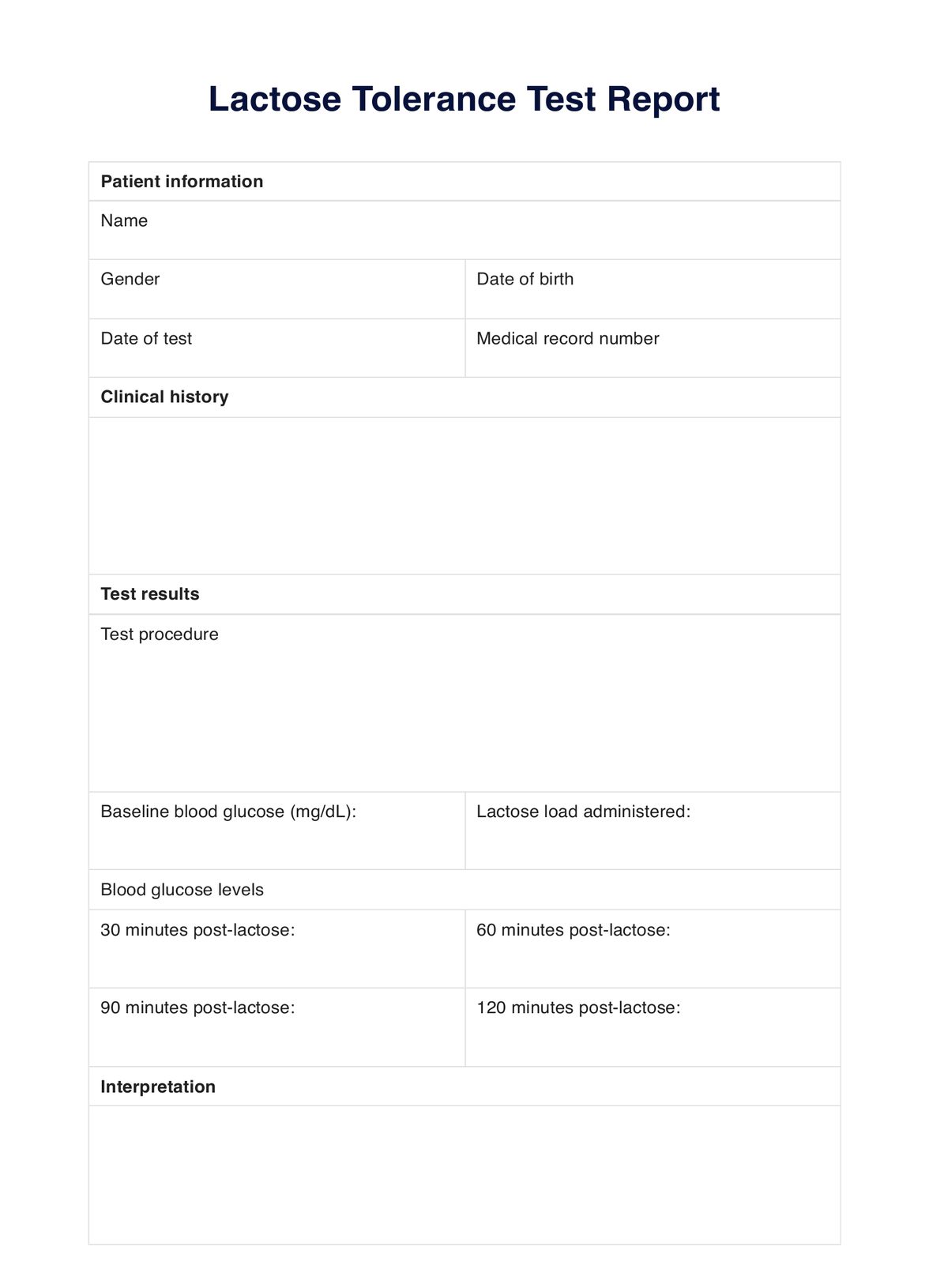Primary care doctors, gastroenterologists, and dietitians may ask for a Lactose Tolerance Test for patients experiencing symptoms after consuming dairy products or those with a family history of lactose intolerance.

Lactose Tolerance Test Reports
Learn about the Lactose Tolerance Test, its purpose, and procedure, and get an example of the test results in this guide. Download a free PDF template here.
Lactose Tolerance Test Reports Template
Commonly asked questions
Lactose Tolerance Tests are used when a patient is experiencing symptoms such as bloating, gas, or diarrhea after consuming dairy products. It may also be recommended for those with a family history of lactose intolerance or if there is suspicion of other conditions affecting lactose digestion.
The test may take anywhere from 2 to 5 hours, depending on the protocol used by the healthcare provider. This includes fasting time, drinking the lactose solution, and measuring glucose levels regularly.
EHR and practice management software
Get started for free
*No credit card required
Free
$0/usd
Unlimited clients
Telehealth
1GB of storage
Client portal text
Automated billing and online payments











